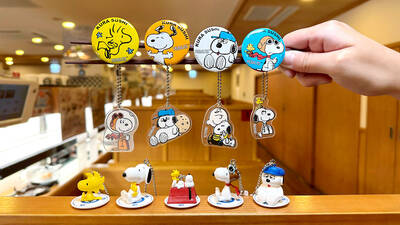The name “coronavirus” is descriptive of the virus particles (virions), which look like the tines of a crown. In ancient Rome, the Latin corona meant a crown or a garland bestowed for distinguished military service. By extension, it has come to be used as a byword for the royal family.
In old English law, the title custos placitorum coronae meant “keeper of the pleas of the crown.” The title was then simplified to coroner, and later, by the 17th century, the coroner’s duties were reduced to examining the reasons for a person’s death.
“Coronation” also derives from the Latin root, and from around 1400 has meant the “act or ceremony of investing (a sovereign) with a crown.”

Photo: Wikimedia Commons
照片:維基共享資源
The shape of the crown has led to the use of “corona” to refer to things resembling a tined ring around another object, giving us the sun’s corona — first used in 1809 — and the coronary arteries, first recorded in 1741, surrounding the heart.
A “coronary,” meaning a blockage of the flow of blood to the heart caused by a clot in a coronary artery, was first used in 1955. It is short for coronary thrombosis.
(Paul Cooper, Taipei Times)
冠狀病毒「coronavirus」這個名字,描述該病毒的顆粒(病毒粒子),看起來就像是皇冠上的尖叉。在古羅馬時期,「corone」這個拉丁字可指皇冠,或因傑出軍功所贈與的花冠,後來引伸為皇室的代稱。
在古老的英格蘭律法中,「custos placitorum coronae」這個頭銜曾意指君王訴訟的掌管者,後來被簡化為「coroner」,之後到了十七世紀,該職位限縮為驗屍官,僅負責查驗人們死亡的原因。
加冕典禮「coronation」同樣衍生自這個拉丁字根,大約自一四○○年起,被用來表示授予(君王)皇冠的動作或儀典。
而皇冠的形狀,亦導致「corona」這個字被類比為︰一圈尖齒狀的東西環繞在某物體上,如我們所知太陽的日冕——該詞在一八○九年首次被使用——及圍繞著心臟的冠狀動脈,該詞在一七四一年首次被記載。
所謂的冠心病「coronary」,則是指冠狀動脈中的凝塊阻塞了流向心臟的血液,該詞在一九五五年首次被使用,是冠狀動脈血栓的簡稱。
(台北時報張聖恩譯)

A: The news says comic superstar Snoopy’s birthday is coming soon on Aug. 10. B: So he’s a Leo, and his birthday will fall on this Sunday. A: Cartoonist Charles Schulz created the comic strip Peanuts, featuring Snoopy, in 1950. And this year marks the character’s 75th anniversary. B: No wonder there are some big celebrations in Japan, Hong Kong and elsewhere. How about Taiwan? A: The “How Do You Do, Snoopy?” exhibition is taking place in Taipei. Let’s go to Shin Kong Mitsukoshi Department Store’s A11 branch to see the show. A: 新聞說,卡通巨星史努比的生日是8月10日耶。 B: 原來史努比是獅子座,本週日就是他的生日。 A: 漫畫家查爾斯舒茲1950年在《花生》漫畫創造了該角色,今年正好歡慶75週年! B:

When you think of the Netherlands, images of tulips, windmills, and iconic wooden shoes — known as “Dutch clogs” — may come to mind. These traditional shoes are rich in cultural significance. For centuries, Dutch clogs have been admired for their sturdy design and impressive craftsmanship, making them a fascinating symbol of Dutch heritage. Dutch clogs date back to the Middle Ages. During that time, farmers and laborers needed durable shoes to cope with the region’s damp and unpredictable climate and topography. Crafted from solid wood, such as willow or poplar, clogs offered outstanding protection. Their firm structure kept

Bilingual Story is a fictionalized account. 雙語故事部分內容純屬虛構。 “One DA-BEI... WU LONG... NAI?” Yujing smiled as the foreigner struggled to order. He looked like an embarrassed puppy. She repeated the order in Chinese, then English: “Oolong milk tea, large size. Half sweet, no ice?” she said gently. He beamed — the kind of full-face, sunshine smile that Latinos are famous for. “Yes! That! You are... lo maximo… the best!” After he left, Lily nudged her. “Nice save. You’re getting the hang of it.” Yujing had taken this summer job at the bubble tea shop to build confidence and get work

A: Apart from the “How Do You Do, Snoopy?” exhibition, the Penghu International Fireworks Festival displayed some Snoopy-themed balloon installation art. B: The Yilan International Children’s Folklore & Folkgame Festival also displayed a giant rubber “Snoopy Duck.” A: And Starbucks, Kura Sushi and 7-Eleven are all selling Snoopy-themed products. B: Starlux Airlines even launched new Snoopy-themed flights recently. Isn’t that cool? A: Taiwanese love Snoopy so much. Happy 75th birthday, Snoopy. A: 除了《How Do You Do, Snoopy?花生漫畫75週年特展》,澎湖海上花火節展出了史努比氣球裝置藝術。 B: 而宜蘭國際童玩藝術節,則展出了巨型「史努比鴨」。 A: 星巴克、藏壽司、7-Eleven也推出了史努比聯名商品。 B: 星宇航空今年更推出全新「Snoopy主題航班」,很酷吧? A: 台灣人好愛史努比啊,75歲生日快樂!